Abstract
The periodic calculation of healthy life expectancies permits the evaluation of the impact of new health policies at a given moment, as well as the assessment of trends under changing health conditions. In spite of their apparent simplicity, the results obtained will have to be interpreted by experts. Useful reference values can be provided by international comparisons. However, several choices remain to be made, such as (i) the types of morbidity and disability data to be associated with mortality data; (ii) the multiple indicators available; (iii) the type of observations to be recorded, i.e., "abilities" or "performances"; (iv) whether or not the recovery of lost functions should be considered; (v) the mode of computation, i.e., life expectancy before the first morbid event or global healthy life expectancy; and (vi) the determination of thresholds based on either relative or absolute criteria.
Full text
PDF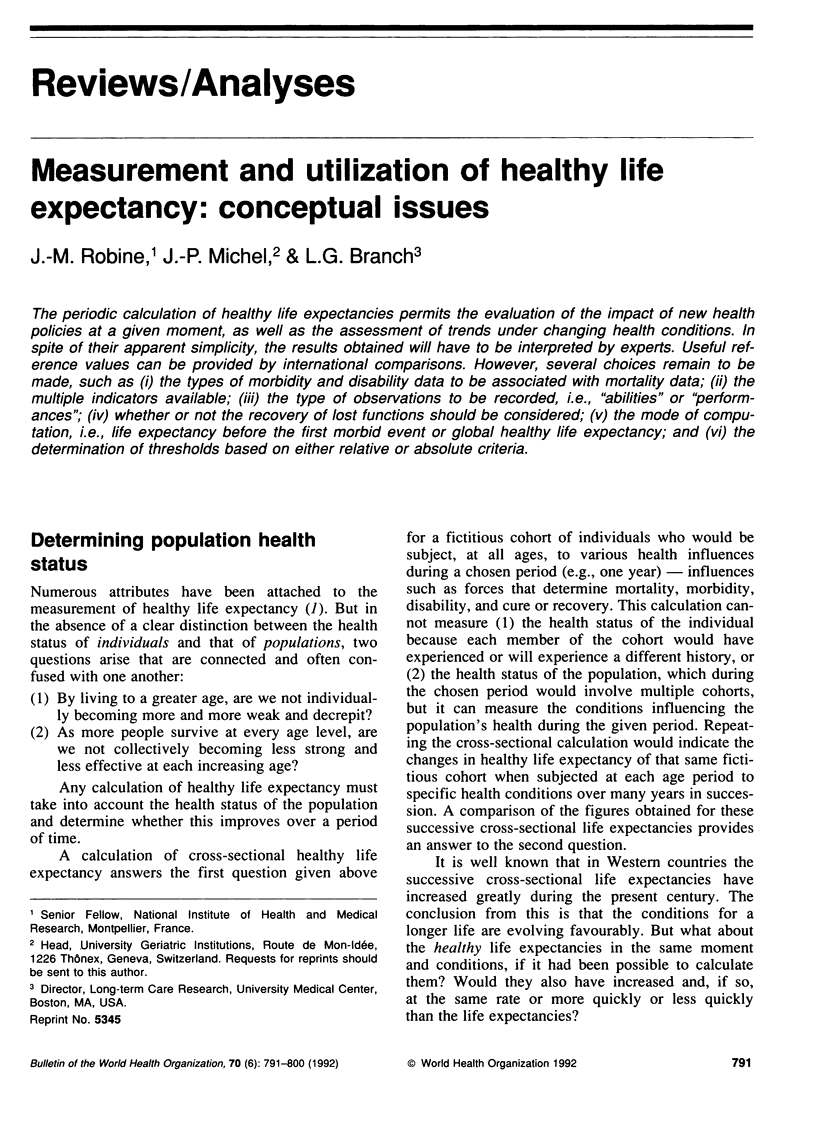
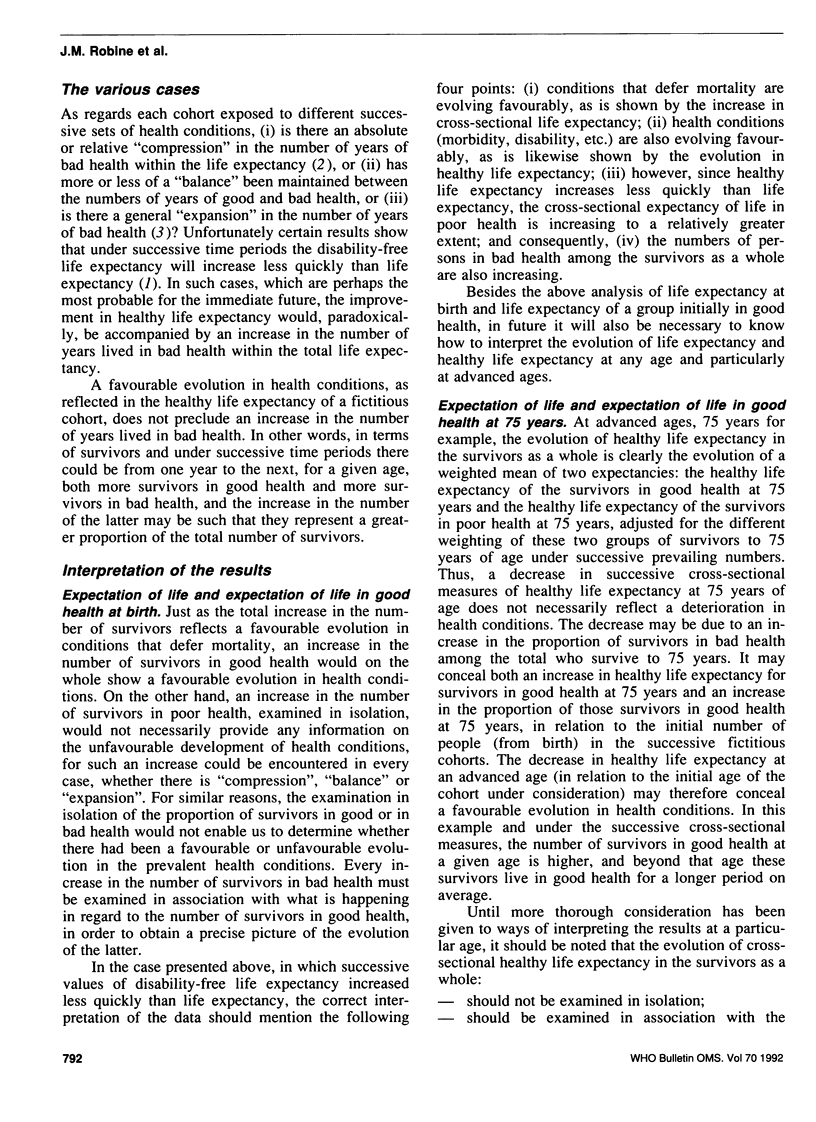
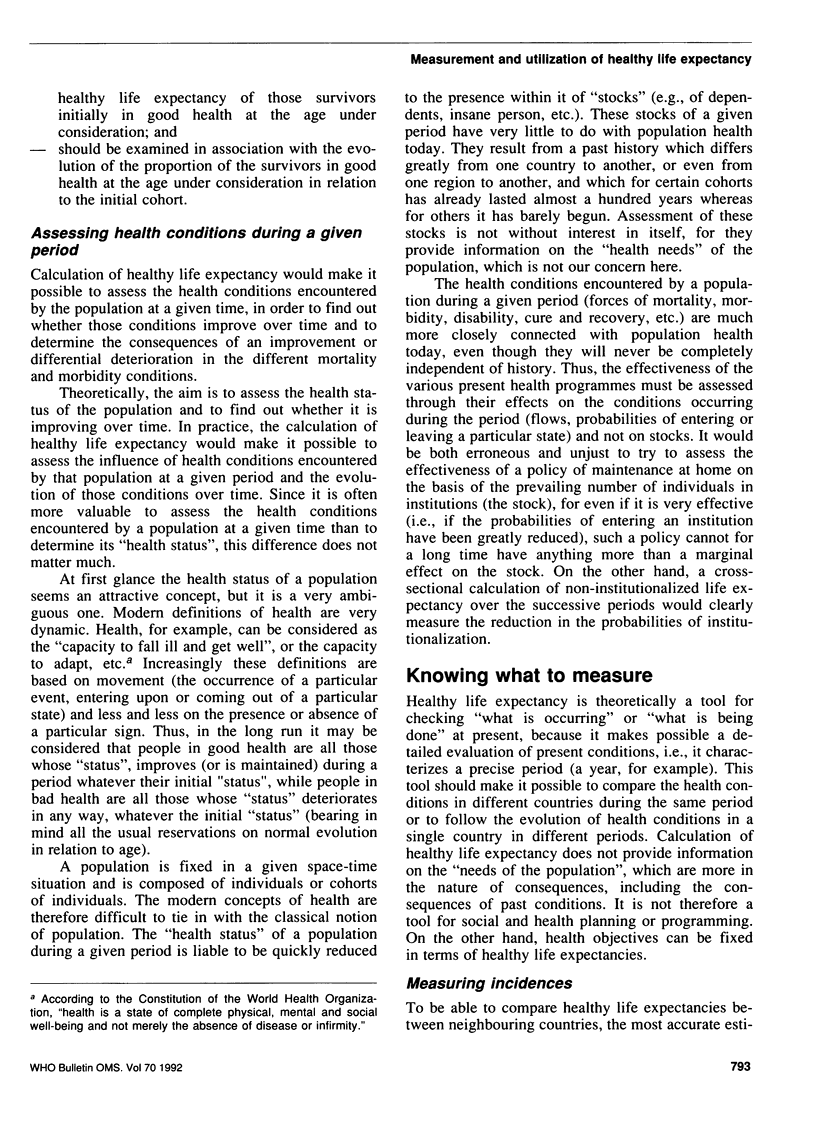
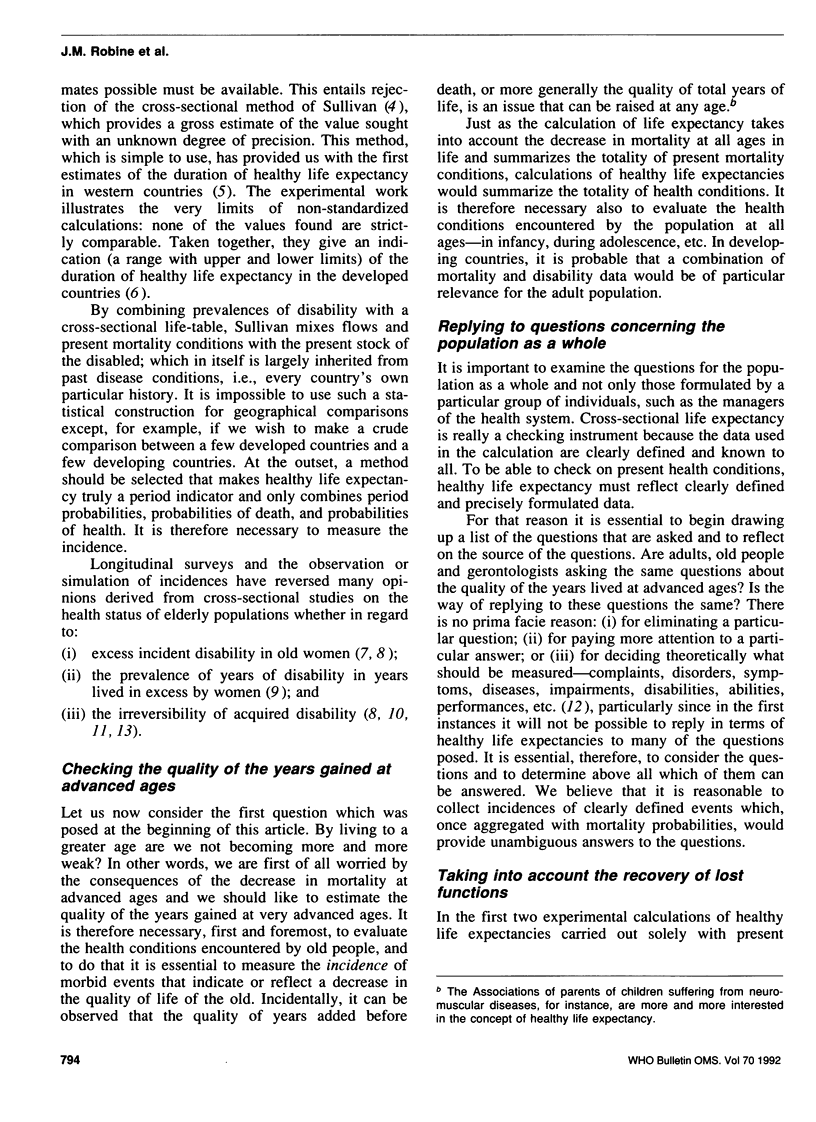
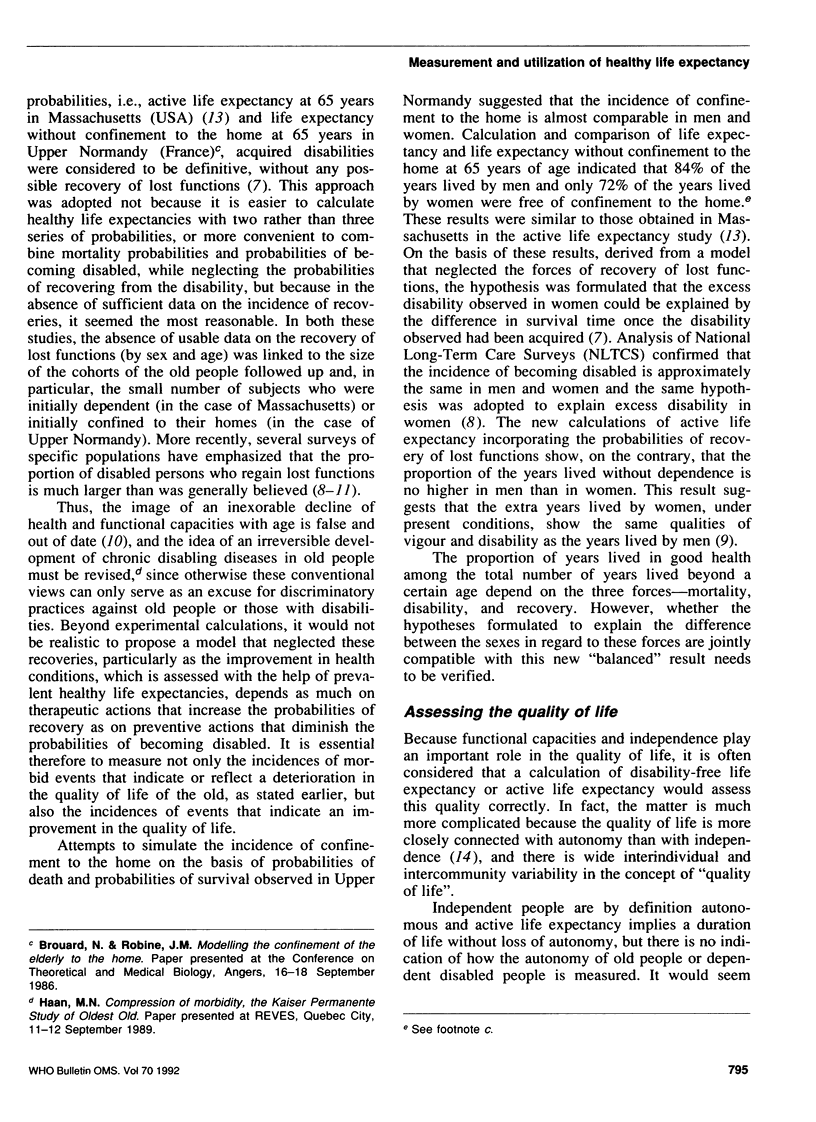
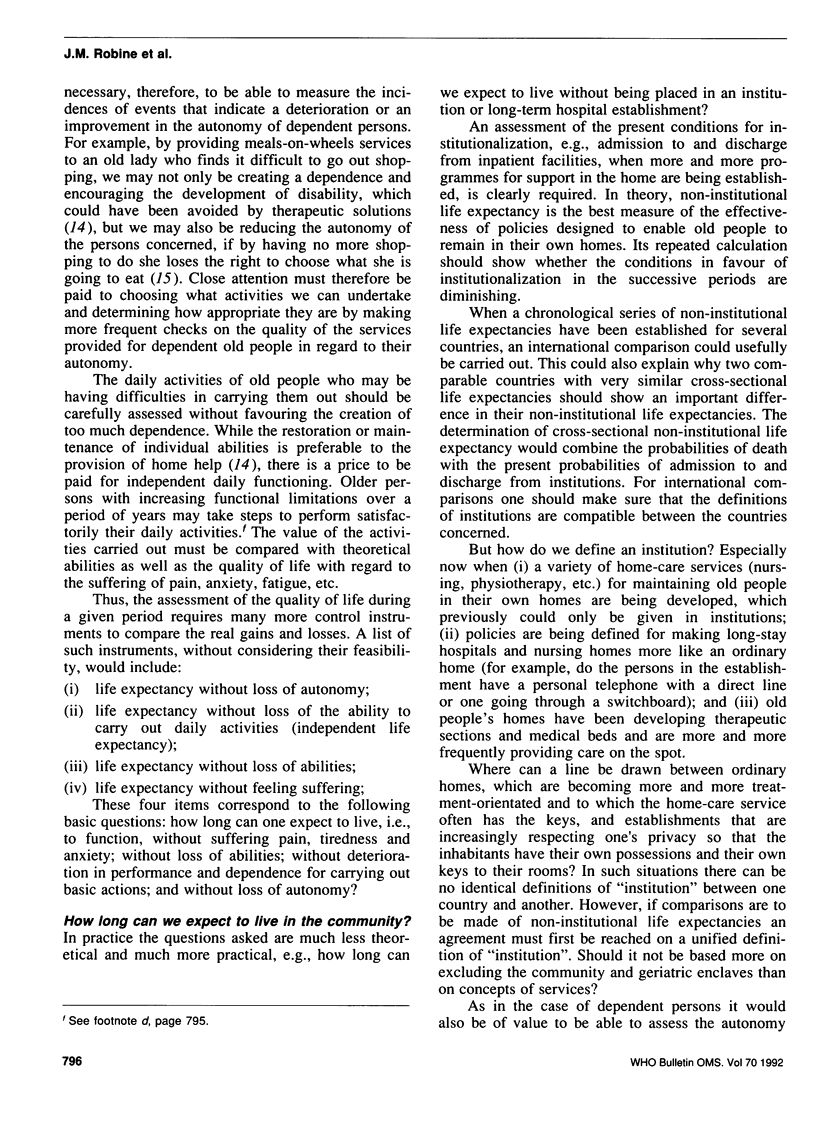
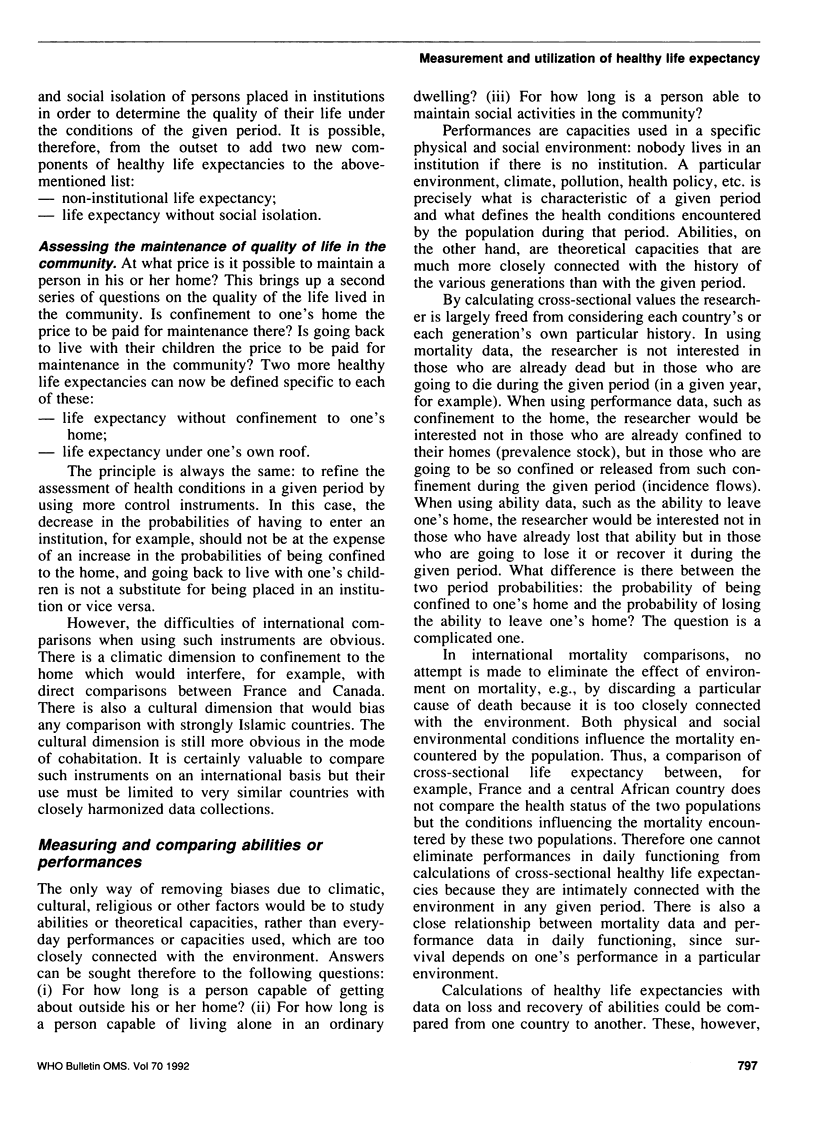
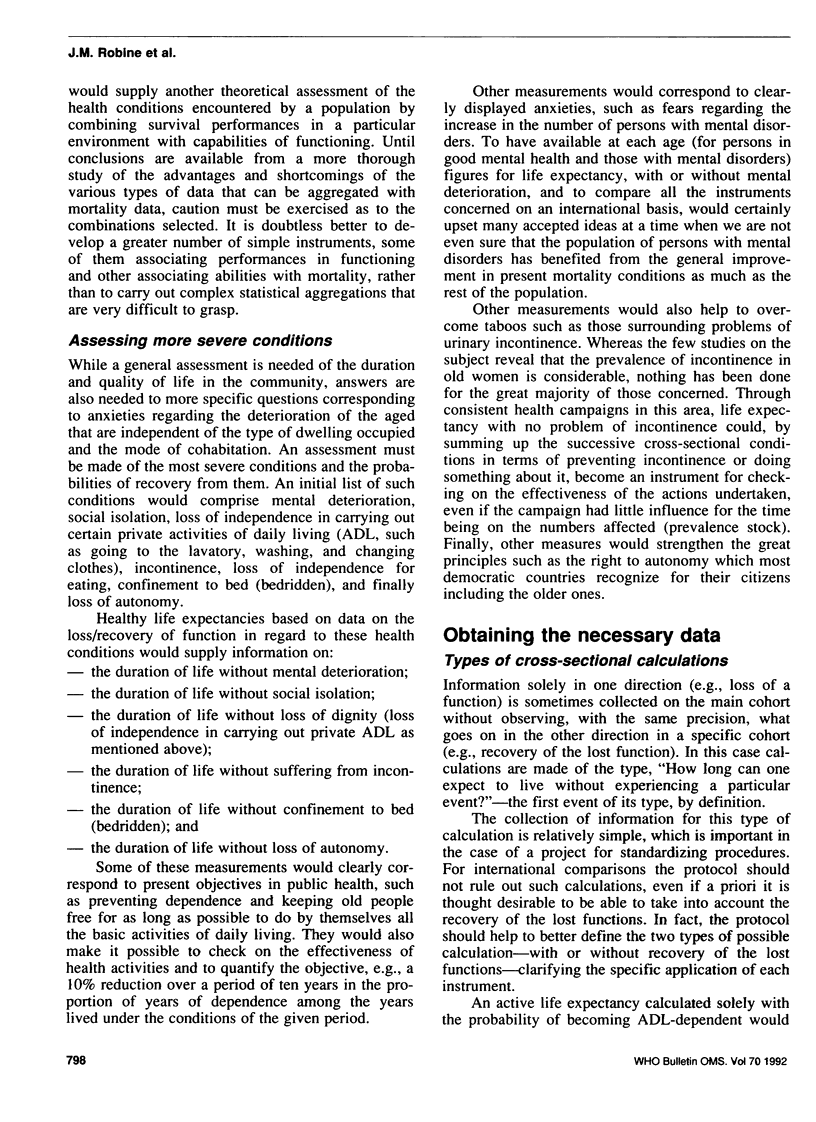
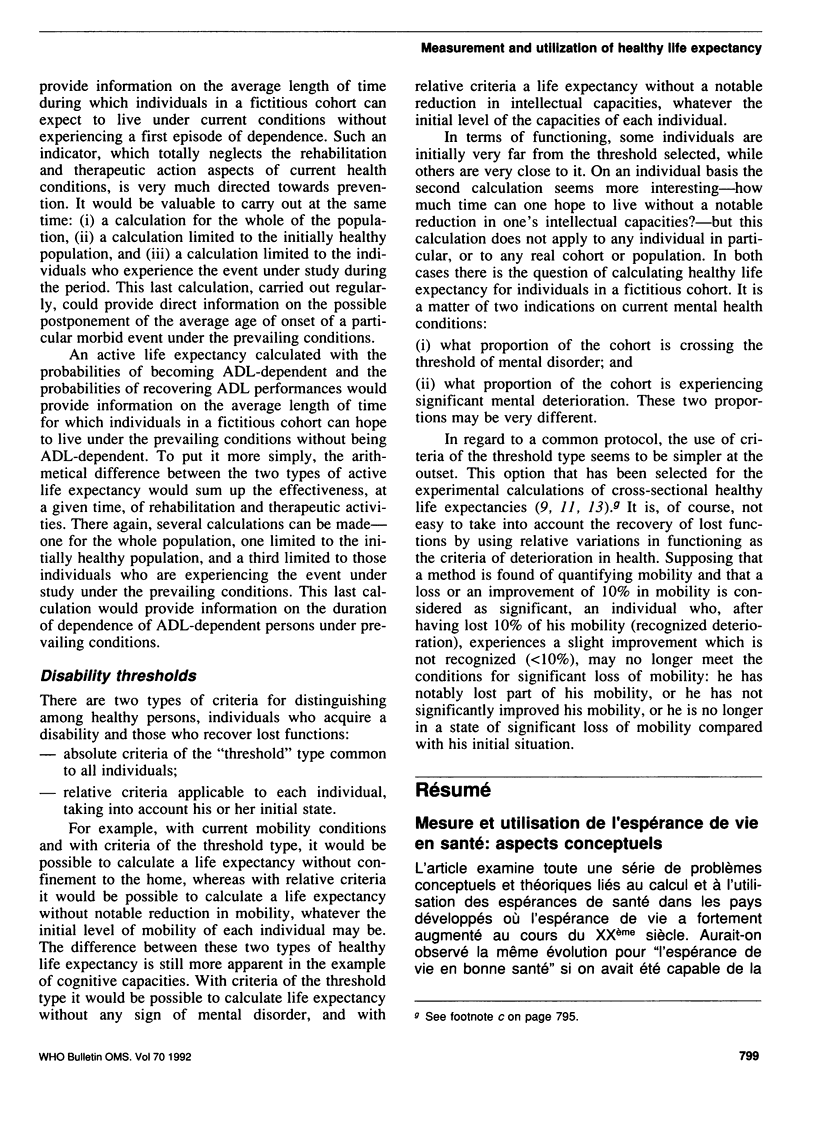
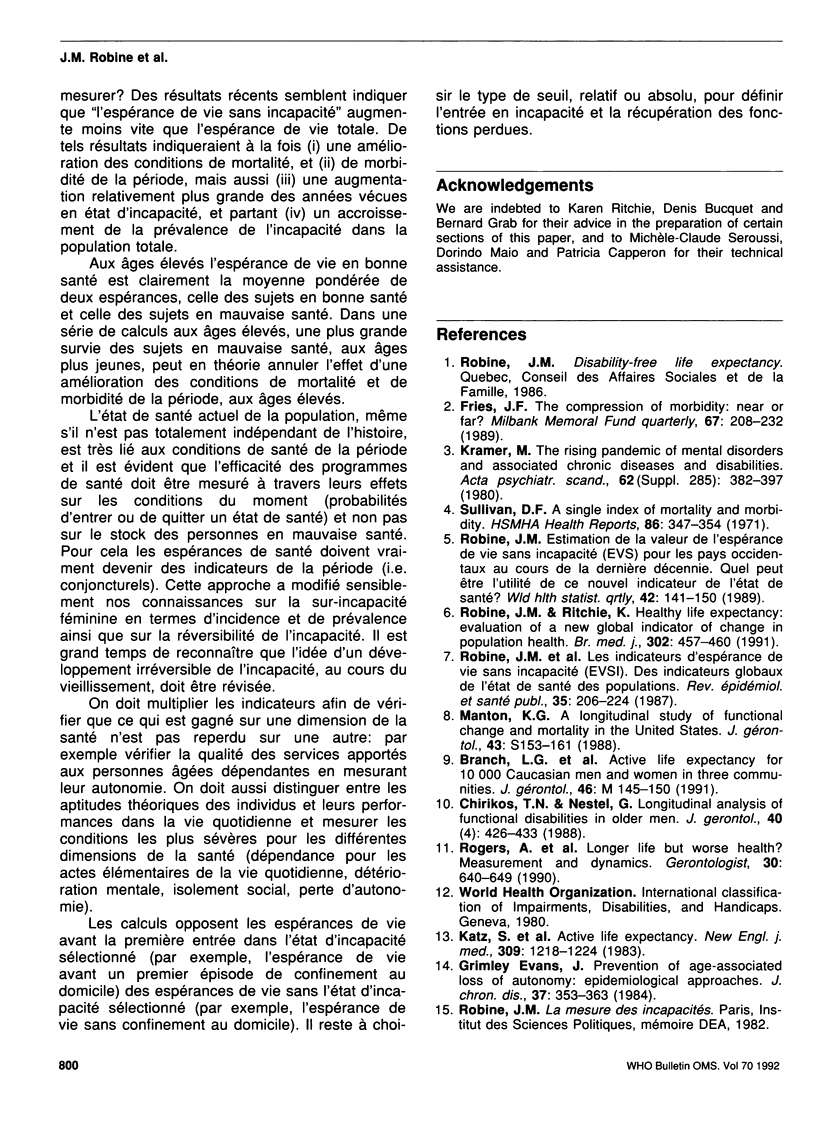
Selected References
These references are in PubMed. This may not be the complete list of references from this article.
- Chirikos T. N., Nestel G. Longitudinal analysis of functional disabilities in older men. J Gerontol. 1985 Jul;40(4):426–433. doi: 10.1093/geronj/40.4.426. [DOI] [PubMed] [Google Scholar]
- Fries J. F. The compression of morbidity: near or far? Milbank Q. 1989;67(2):208–232. [PubMed] [Google Scholar]
- Grimley Evans J. Prevention of age-associated loss of autonomy: epidemiological approaches. J Chronic Dis. 1984;37(5):353–363. doi: 10.1016/0021-9681(84)90101-2. [DOI] [PubMed] [Google Scholar]
- Katz S., Branch L. G., Branson M. H., Papsidero J. A., Beck J. C., Greer D. S. Active life expectancy. N Engl J Med. 1983 Nov 17;309(20):1218–1224. doi: 10.1056/NEJM198311173092005. [DOI] [PubMed] [Google Scholar]
- Manton K. G. A longitudinal study of functional change and mortality in the United States. J Gerontol. 1988 Sep;43(5):S153–S161. doi: 10.1093/geronj/43.5.s153. [DOI] [PubMed] [Google Scholar]
- Robine J. M., Brouard N., Colvez A. Les indicateurs d'espérance de vie sans incapacité (EVSI). Des indicateurs globaux de l'état de santé des populations. Rev Epidemiol Sante Publique. 1987;35(3-4):206–224. [PubMed] [Google Scholar]
- Robine J. M. Estimation de la valeur de l'espérance de vie sans incapacité (EVSI) pour les pays occidentaux au cours de la dernière décennie. Quelle peut être l'utilité de ce nouvel indicateur de l'état de santée? World Health Stat Q. 1989;42(3):141–150. [PubMed] [Google Scholar]
- Robine J. M., Ritchie K. Healthy life expectancy: evaluation of global indicator of change in population health. BMJ. 1991 Feb 23;302(6774):457–460. doi: 10.1136/bmj.302.6774.457. [DOI] [PMC free article] [PubMed] [Google Scholar]
- Rogers A., Rogers R. G., Belanger A. Longer life but worse health? Measurement and dynamics. Gerontologist. 1990 Oct;30(5):640–649. doi: 10.1093/geront/30.5.640. [DOI] [PubMed] [Google Scholar]
- Sullivan D. F. A single index of mortality and morbidity. HSMHA Health Rep. 1971 Apr;86(4):347–354. [PMC free article] [PubMed] [Google Scholar]


